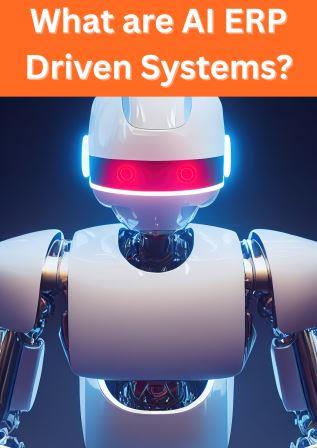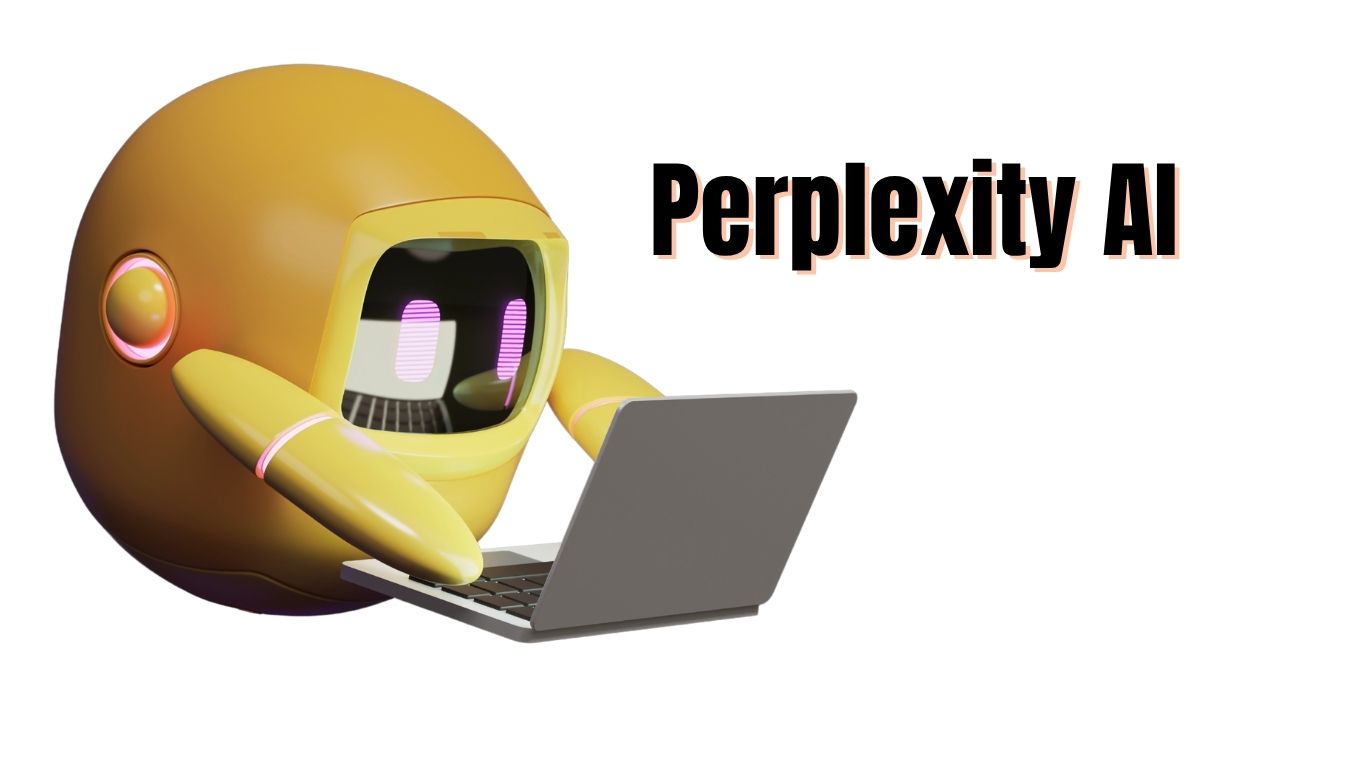The convergence of Artificial Intelligence (AI) and Enterprise Resource Planning (ERP) systems represents one of the most significant technological shifts in modern business operations. For companies like Nusaker, a leading gadget review and recommendation platform, this transformation isn’t just an upgrade—it’s a complete reimagining of how businesses operate, compete, and scale in the digital economy.
AI-driven ERP systems are fundamentally changing the landscape of enterprise management by introducing unprecedented levels of automation, predictive capabilities, and intelligent decision-making. As we advance through 2025, these systems are becoming the cornerstone of competitive advantage, particularly for technology-focused companies like Nusaker that operate in fast-paced, data-intensive environments.

Understanding AI-Driven ERP Systems {#understanding-ai-erp}
What Makes AI-ERP Different from Traditional Systems?
Traditional ERP systems serve as centralized platforms for managing business processes, but they operate primarily on rule-based logic and historical data analysis. AI-driven ERP systems elevate this foundation by incorporating:
Machine Learning Algorithms: These systems continuously learn from data patterns, improving their accuracy and effectiveness over time without manual intervention.
Natural Language Processing (NLP): Enables users to interact with ERP systems using conversational interfaces, making complex data queries accessible to non-technical staff.
Computer Vision: Particularly valuable for inventory management and quality control processes.
Predictive Analytics: Goes beyond reporting what happened to forecasting what will happen, enabling proactive decision-making.
Robotic Process Automation (RPA): Automates repetitive tasks across different modules within the ERP ecosystem.
The Technology Stack Behind AI-ERP Integration
Modern AI-driven ERP systems typically incorporate:
- Deep Learning Frameworks: TensorFlow, PyTorch, and specialized enterprise AI platforms
- Cloud Infrastructure: AWS, Azure, or Google Cloud for scalable computing power
- Data Lakes and Warehouses: For storing and processing vast amounts of structured and unstructured data
- API-First Architecture: Enabling seamless integration with existing business applications
- Edge Computing Capabilities: For real-time processing and reduced latency
Find out: Best AI Tool For Your Project
AI-Driven ERP Systems: The Future of Nusaker
Current Challenges Facing Nusaker
As a gadget review and recommendation platform, Nusaker operates in an environment characterized by:
Rapid Product Lifecycles: New gadgets and technologies emerge constantly, requiring agile content creation and inventory management.
Data Volume Complexity: Processing millions of product specifications, user reviews, pricing data, and market trends simultaneously.
Content Personalization Demands: Users expect highly personalized recommendations based on their preferences, budget, and usage patterns.
Supply Chain Visibility: Need for real-time insights into product availability, pricing fluctuations, and vendor relationships.
Competitive Intelligence: Monitoring competitor activities, pricing strategies, and market positioning.
How AI-ERP Addresses Nusaker’s Specific Needs
Intelligent Content Management: AI algorithms can automatically categorize new products, extract key features, and generate initial review frameworks based on product specifications and market data.
Dynamic Pricing Intelligence: Machine learning models analyze market trends, competitor pricing, and demand patterns to provide optimal pricing recommendations for affiliate partnerships.
Predictive Inventory Forecasting: AI-driven ERP systems can predict which gadgets will trend, helping Nusaker prioritize review schedules and content creation resources.
Automated Quality Assurance: Natural language processing can analyze review content for accuracy, completeness, and bias, ensuring consistent quality across all published content.
Customer Behavior Analytics: Advanced analytics provide insights into user engagement patterns, helping optimize content strategy and user experience design.
Core AI Technologies Revolutionizing ERP {#ai-technologies}
Machine Learning and Predictive Analytics
Sales Forecasting: AI algorithms analyze historical data, market trends, and external factors to predict future sales with accuracy rates exceeding 95%.
Demand Planning: Machine learning models consider seasonality, promotional activities, and market dynamics to optimize inventory levels and reduce carrying costs.
Risk Assessment: Predictive models identify potential supply chain disruptions, financial risks, and operational bottlenecks before they impact business operations.
Natural Language Processing in ERP
Intelligent Document Processing: NLP capabilities enable automatic extraction and categorization of information from contracts, invoices, and technical specifications.
Conversational Analytics: Users can query ERP data using natural language, making complex business intelligence accessible to all stakeholders.
Sentiment Analysis: For companies like Nusaker, NLP can analyze customer feedback and reviews to identify satisfaction trends and product issues.
Computer Vision Applications
Quality Control Automation: Automated inspection of products using computer vision reduces manual quality assurance efforts while improving accuracy.
Inventory Management: Visual recognition systems can track inventory levels, identify discrepancies, and automate stock counting processes.
Document Digitization: AI-powered optical character recognition (OCR) digitizes and processes paper-based documents automatically.
Robotic Process Automation (RPA)
Financial Processing: Automated invoice processing, payment reconciliation, and financial reporting reduce manual effort by up to 80%.
Data Entry and Validation: RPA bots handle routine data entry tasks while ensuring accuracy and compliance with business rules.
Integration Management: Automated data synchronization between different systems and platforms eliminates manual integration efforts.
Industry-Specific Applications {#industry-applications}
E-commerce and Digital Platforms
For platforms like Nusaker, AI-driven ERP systems provide:
Dynamic Content Optimization: AI algorithms optimize content placement, recommend related products, and personalize user experiences based on browsing behavior and preferences.
Inventory Synchronization: Real-time synchronization between content management systems and inventory databases ensures accurate product availability information.
Performance Analytics: Advanced analytics track content performance, user engagement, and conversion rates across different product categories and review types.
Technology Review and Recommendation Sector
Automated Competitive Analysis: AI systems continuously monitor competitor activities, pricing strategies, and product launches, providing real-time competitive intelligence.
Trend Identification: Machine learning algorithms identify emerging technology trends by analyzing patent filings, research publications, and market data.
Expert System Development: AI-driven ERP can develop expert systems that replicate the decision-making processes of experienced reviewers and technology analysts.
Implementation Strategy for Nusaker {#implementation-strategy}
Phase 1: Assessment and Planning (Months 1-2)
Current State Analysis: Comprehensive evaluation of existing systems, processes, and data infrastructure.
Requirements Definition: Detailed specification of business requirements, technical constraints, and success criteria.
Vendor Selection: Evaluation of AI-ERP platforms based on functionality, scalability, integration capabilities, and total cost of ownership.
Change Management Planning: Development of communication strategies, training programs, and organizational change management initiatives.
Phase 2: Core System Implementation (Months 3-8)
Data Migration and Integration: Systematic migration of existing data while establishing connections with current business applications.
Core Module Deployment: Implementation of essential ERP modules including financial management, inventory tracking, and content management.
AI Model Training: Development and training of machine learning models using historical data and business-specific requirements.
User Training and Adoption: Comprehensive training programs for different user groups and stakeholder categories.
Phase 3: Advanced AI Features (Months 9-12)
Predictive Analytics Deployment: Implementation of forecasting models for sales, inventory, and market trends.
Process Automation: Deployment of RPA solutions for routine tasks and workflow automation.
Advanced Reporting and Analytics: Development of custom dashboards and analytical tools for different business functions.
Performance Optimization: Fine-tuning of AI models and system performance based on real-world usage data.
Phase 4: Continuous Improvement (Ongoing)
Model Refinement: Continuous improvement of AI models based on new data and changing business requirements.
Feature Enhancement: Regular addition of new AI capabilities and system functionalities.
Scale Optimization: Expansion of system capabilities to support business growth and new market opportunities.
ROI Analysis and Performance Metrics {#roi-analysis}
Expected Financial Benefits
Operational Cost Reduction: AI-driven automation can reduce operational costs by 25-40% through process optimization and resource efficiency.
Revenue Enhancement: Improved decision-making and predictive capabilities typically result in 15-25% revenue growth through better market timing and resource allocation.
Inventory Optimization: Advanced forecasting reduces inventory carrying costs by 20-30% while improving product availability.
Risk Mitigation: Predictive risk management prevents costly disruptions, potentially saving 5-10% of annual revenue.
Key Performance Indicators (KPIs)
Process Efficiency Metrics:
- Order processing time reduction: Target 60-70%
- Invoice processing accuracy: Target 99.5%
- Inventory turnover improvement: Target 30-40%
Decision-Making Quality:
- Forecast accuracy improvement: Target 15-25%
- Strategic decision response time: Target 50% reduction
- Data-driven decision percentage: Target 85%+
Customer Experience Metrics:
- Content personalization accuracy: Target 80%+
- User engagement improvement: Target 25-35%
- Customer satisfaction scores: Target 15-20% improvement
Financial Performance:
- Return on investment: Target 200-300% within 24 months
- Total cost of ownership reduction: Target 20-30%
- Revenue per employee: Target 25-40% increase
Challenges and Risk Mitigation {#challenges-mitigation}
Technical Challenges
Data Quality and Integration: Poor data quality can significantly impact AI model performance and decision-making accuracy.
Mitigation Strategy: Implement comprehensive data governance frameworks, establish data quality standards, and invest in data cleansing and preparation tools.
System Complexity: AI-driven ERP systems are inherently more complex than traditional solutions, requiring specialized expertise.
Mitigation Strategy: Partner with experienced implementation consultants, invest in comprehensive training programs, and establish ongoing technical support relationships.
Security and Privacy Concerns: AI systems often require access to sensitive business data, creating potential security vulnerabilities.
Mitigation Strategy: Implement robust cybersecurity frameworks, ensure compliance with data protection regulations, and establish clear data access controls.
Organizational Challenges
Change Resistance: Employees may resist adopting new technologies, particularly AI-driven systems that could automate their current responsibilities.
Mitigation Strategy: Develop comprehensive change management programs, emphasize skill development opportunities, and clearly communicate the benefits of AI adoption.
Skill Gaps: Organizations often lack the technical expertise required to effectively implement and manage AI-driven ERP systems.
Mitigation Strategy: Invest in employee training and development, hire specialized talent, and establish partnerships with technology vendors and consultants.
Cultural Adaptation: Transitioning to data-driven, AI-enabled decision-making requires significant cultural changes within organizations.
Mitigation Strategy: Lead by example, celebrate early wins, and create incentive structures that reward data-driven decision-making.
Financial and Strategic Risks
Implementation Costs: AI-driven ERP implementations typically require significant upfront investments in technology, consulting, and training.
Mitigation Strategy: Develop phased implementation approaches, establish clear ROI targets, and secure adequate funding commitments from leadership.
Vendor Dependence: Relying heavily on specific AI-ERP vendors can create strategic vulnerabilities and limit future flexibility.
Mitigation Strategy: Choose vendors with strong market positions, ensure data portability, and maintain some level of system flexibility through API-first architectures.
Future Trends and Predictions {#future-trends}
Emerging Technologies in AI-ERP
Quantum Computing Integration: By 2027-2028, early quantum computing applications may begin influencing complex optimization problems within ERP systems.
Advanced Natural Language Interfaces: Voice-activated ERP interfaces and conversational AI assistants will become standard features by 2026.
Augmented Reality (AR) Integration: AR interfaces for inventory management, maintenance, and training will become increasingly common.
Blockchain Integration: Smart contracts and blockchain technology will enhance supply chain transparency and transaction security.
Industry-Specific Evolution
Content Creation Automation: For platforms like Nusaker, AI will increasingly automate content creation, from initial product analysis to comprehensive review generation.
Real-Time Market Intelligence: AI systems will provide real-time insights into market trends, competitive activities, and consumer preferences.
Predictive User Experience: Advanced AI will predict user preferences and behavior patterns, enabling proactive content and experience personalization.
Regulatory and Compliance Developments
AI Governance Frameworks: Emerging regulations around AI usage will require businesses to implement transparent, accountable AI systems.
Data Protection Evolution: Stricter data protection requirements will influence how AI-ERP systems collect, process, and store information.
Industry Standards: Development of industry-specific AI-ERP standards will improve interoperability and reduce implementation complexity.
Implementation Best Practices for Nusaker
Technical Best Practices
API-First Architecture: Design systems with robust API capabilities to ensure flexibility and future integration possibilities.
Data Architecture Excellence: Establish comprehensive data lakes and warehouses that can support both current needs and future AI applications.
Cloud-Native Deployment: Leverage cloud infrastructure for scalability, reliability, and cost optimization.
Security by Design: Implement security considerations from the initial design phase rather than as an afterthought.
Organizational Best Practices
Executive Sponsorship: Ensure strong leadership support and involvement throughout the implementation process.
Cross-Functional Teams: Establish implementation teams that include representatives from all affected business functions.
Agile Methodology: Use iterative, agile approaches to implementation that allow for continuous learning and adjustment.
Performance Monitoring: Establish comprehensive monitoring and measurement systems to track implementation progress and business impact.
Strategic Best Practices
Phased Approach: Implement AI-ERP capabilities in phases to manage risk and demonstrate value incrementally.
Vendor Partnership: Develop strong partnerships with technology vendors to ensure ongoing support and system evolution.
Continuous Learning: Establish processes for continuous learning and improvement based on system performance and business results.
Future-Proofing: Design implementations with future technology trends and business growth in mind.
Conclusion and Action Plan {#conclusion}
The integration of AI into ERP systems represents a transformative opportunity for companies like Nusaker to revolutionize their future operations, enhance decision-making capabilities, and establish sustainable competitive advantages. The convergence of machine learning, natural language processing, predictive analytics, and process automation creates unprecedented possibilities for operational excellence and strategic innovation.
For Nusaker specifically, AI-driven ERP systems offer the potential to transform from a traditional content platform into an intelligent, predictive, and highly personalized technology recommendation ecosystem. The ability to process vast amounts of data, predict market trends, and deliver personalized experiences positions Nusaker to capture greater market share and establish deeper customer relationships.
Immediate Action Items
- Conduct Comprehensive Assessment: Evaluate current systems, processes, and readiness for AI-ERP implementation
- Develop Business Case: Create detailed ROI projections and implementation timelines
- Assemble Implementation Team: Recruit internal champions and identify external partners
- Begin Pilot Program: Start with a limited-scope implementation to validate approaches and build momentum
Long-Term Strategic Considerations
The future of business operations lies in the intelligent integration of AI capabilities with core business processes. Companies that successfully implement AI-driven ERP systems today will establish significant competitive advantages that become increasingly difficult for competitors to replicate.
For Nusaker and similar technology-focused organizations, the question is not whether to adopt AI-driven ERP systems, but how quickly and effectively they can be implemented. The organizations that move decisively and strategically in this direction will define the competitive landscape for years to come.
The journey toward AI-driven ERP implementation requires careful planning, significant investment, and organizational commitment. However, the potential rewards—operational excellence, competitive advantage, and sustainable growth—justify the effort and resources required.
As we look toward the future, AI-driven ERP systems will become the foundation upon which successful enterprises build their digital transformation strategies. For Nusaker, this transformation represents not just an operational upgrade, but a fundamental reimagining of what’s possible in the technology review and recommendation industry.


